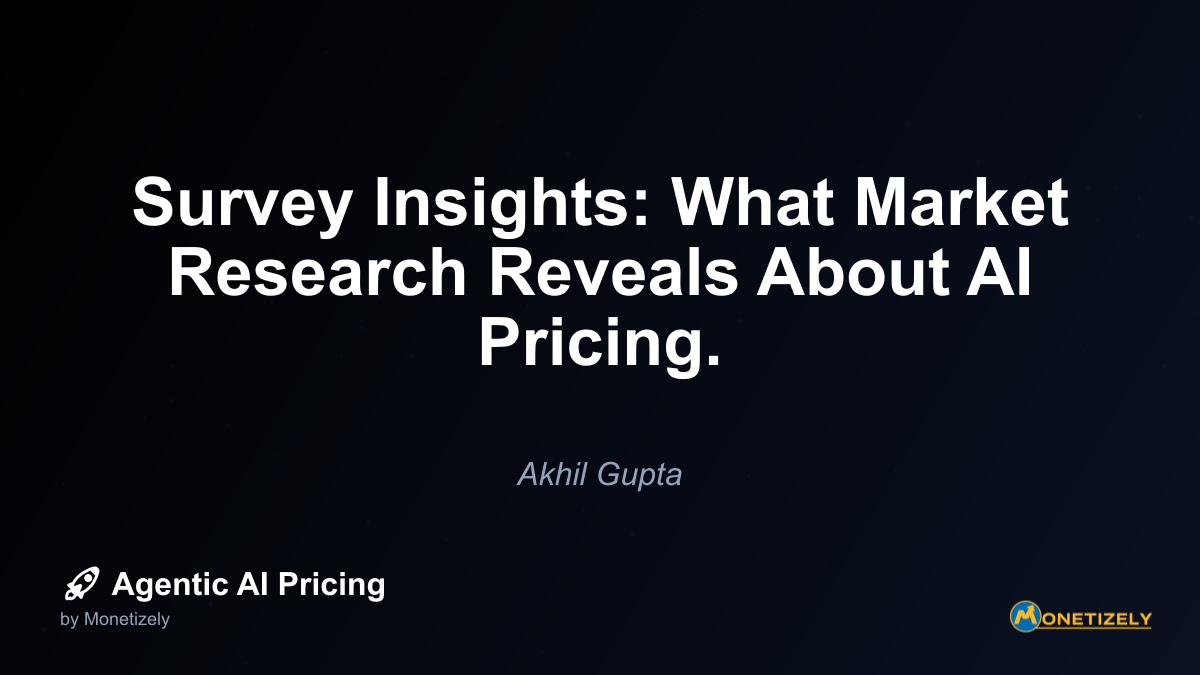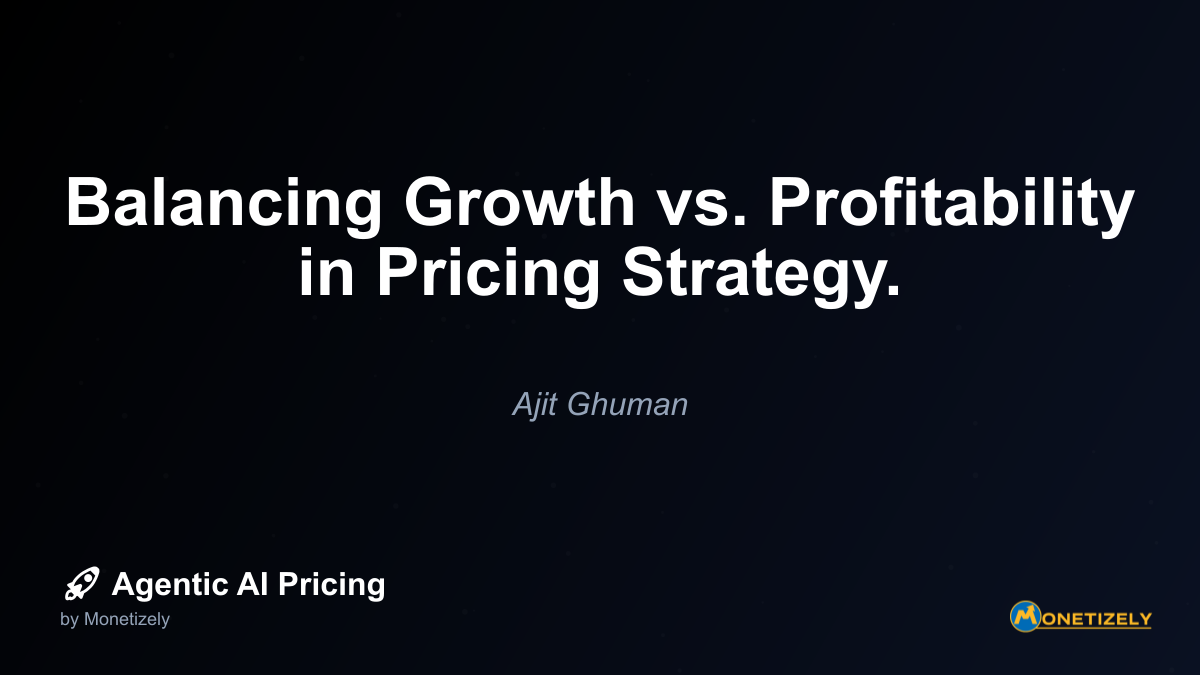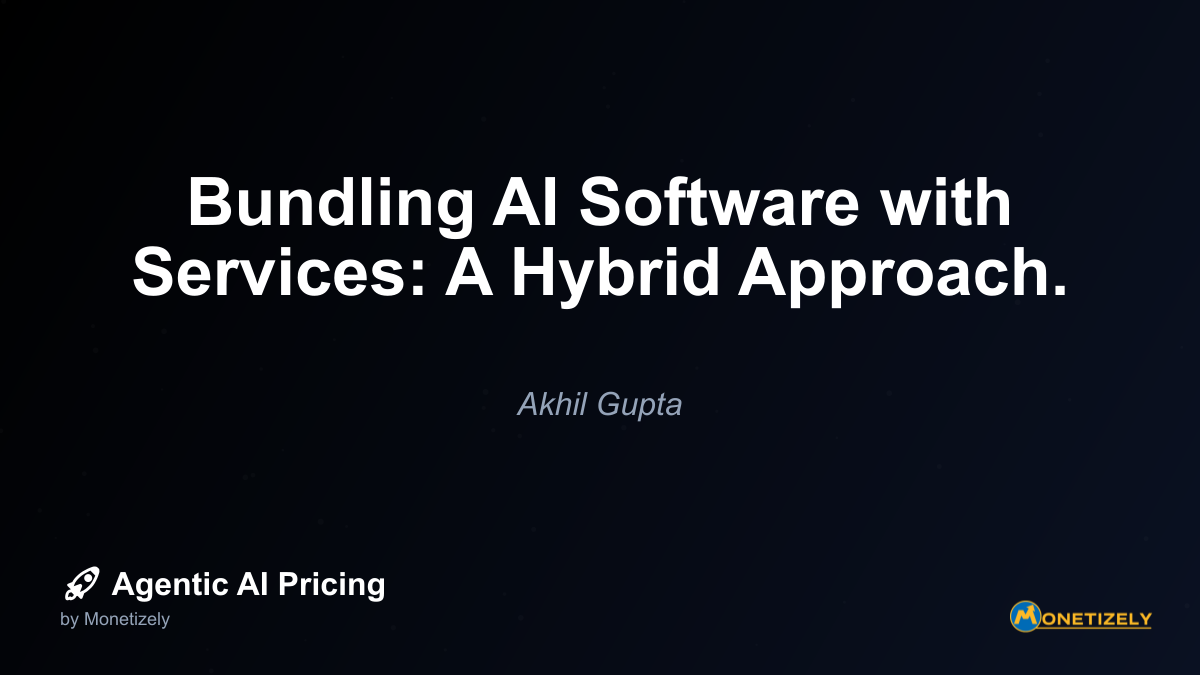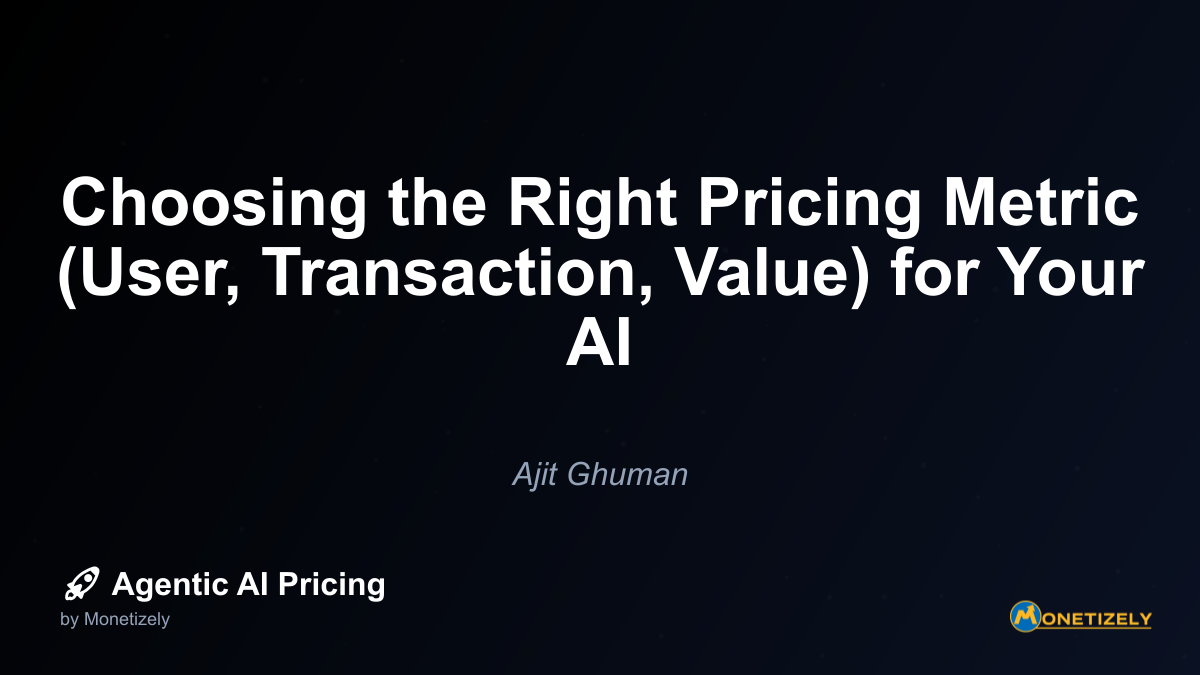· Akhil Gupta · Strategy & Planning · 5 min read
Survey Insights: What Market Research Reveals About AI Pricing.
AI and SaaS Pricing Masterclass
Learn the art of strategic pricing directly from industry experts. Our comprehensive course provides frameworks and methodologies for optimizing your pricing strategy in the evolving AI landscape. Earn a professional certification that can be imported directly to your LinkedIn profile.

The Impact of AI Pricing Models on Customer Lifetime Value
The choice of pricing model doesn’t just affect initial purchase decisions—it also has profound implications for customer lifetime value (CLV). Recent research by McKinsey & Company examining over 500 AI implementations found that the pricing model employed significantly influences customer retention, expansion, and overall lifetime value.
The study revealed the following relationships between pricing models and key CLV metrics:
| Pricing Model | Average Customer Retention Rate (2 years) | Average Annual Expansion Revenue | Average Customer Lifetime Value |
|---|---|---|---|
| Outcome-based | 83% | 31% | $382,000 |
| Usage-based | 76% | 24% | $297,000 |
| Tiered subscription | 71% | 18% | $245,000 |
| Flat subscription | 64% | 12% | $186,000 |
| Perpetual license | 58% | 8% | $142,000 |
These figures demonstrate that pricing models that create ongoing alignment between vendor and customer incentives tend to generate substantially higher customer lifetime value. This alignment encourages both parties to invest in maximizing the value derived from the AI solution, creating a virtuous cycle of increasing returns.
The research further indicates that organizations employing outcome-based and usage-based pricing models invest 42% more in customer success resources compared to those using traditional subscription or perpetual license models. This increased investment appears to pay dividends through higher retention and expansion rates.
The Emergence of Hybrid Pricing Models
While much of the discussion around AI pricing focuses on distinct model categories (subscription, usage-based, outcome-based, etc.), recent market research indicates a growing trend toward hybrid approaches that combine elements of multiple models.
According to a 2023 survey by SaaS Capital, 47% of AI solution providers now employ hybrid pricing models, up from just 29% in 2021. These hybrid approaches typically combine:
- A base subscription fee providing access to core functionality
- Usage-based components for variable consumption
- Outcome-based elements tied to specific business results
The research indicates that hybrid models are particularly prevalent among AI solutions targeting enterprise customers, with 61% of enterprise-focused vendors employing such approaches compared to 38% of vendors targeting small and mid-sized businesses.
Customer feedback suggests these hybrid models often strike an effective balance between predictability and value alignment. The base subscription component provides budgetary predictability, while usage and outcome elements ensure ongoing alignment of incentives between vendor and customer.
Organizations considering hybrid approaches should note that the research also identifies potential challenges, with 53% of vendors citing increased complexity in sales processes and 48% reporting challenges in effectively communicating their value proposition. These findings suggest that while hybrid models can be powerful, they require careful design and clear communication to maximize effectiveness.
Regional Variations in AI Pricing Preferences
Market research reveals significant regional differences in AI pricing preferences and adoption patterns. Understanding these variations is crucial for organizations operating across multiple geographic markets.
North American organizations show the strongest preference for usage-based models (59%), followed by outcome-based approaches (24%). European companies demonstrate more balanced preferences, with subscription models (42%) slightly outpacing usage-based options (38%). In Asia-Pacific markets, subscription models remain dominant (56%), though usage-based approaches are gaining traction (31%).
These regional variations appear to be influenced by several factors:
- Regulatory environments and accounting standards that may favor certain pricing structures
- Cultural differences in risk tolerance and value perception
- Varying levels of AI market maturity across regions
- Different approaches to technology procurement and budgeting
The research further indicates that multinational organizations often maintain different AI pricing strategies across regions to accommodate these variations. Of the companies surveyed that operate in multiple geographic markets, 68% reported employing different pricing models or structures across regions.
This regional diversity highlights the importance of tailoring pricing strategies to local market conditions rather than adopting a one-size-fits-all approach. Organizations should consider conducting region-specific market research to inform localized pricing strategies that align with regional preferences and practices.
Conclusion: Leveraging Market Research to Optimize AI Pricing Strategy
The market research findings presented in this article provide valuable benchmarks and insights to inform AI pricing strategies. Several key themes emerge from the data:
The shift toward value-aligned pricing: Usage-based and outcome-based models are gaining traction across industries, reflecting growing sophistication in how organizations approach AI investments.
The importance of transparency: Clear communication about pricing structure and value proposition significantly impacts conversion rates and customer acquisition metrics.
The opportunity in outcome guarantees: A substantial gap exists between customer demand for performance guarantees and their availability in the market, creating differentiation opportunities.
The power of hybrid approaches: Combining elements of multiple pricing models can create structures that balance predictability with value alignment.
The need for segment-specific strategies: Significant variations exist across industry verticals, company sizes, and geographic regions, necessitating tailored approaches.
Organizations should leverage these insights to benchmark their current AI pricing approaches against market trends and identify opportunities for optimization. The data suggests that the most successful AI pricing strategies will be those that create clear alignment between vendor compensation and customer value realization.
As the AI landscape continues to evolve, ongoing market research will remain essential for staying attuned to shifting customer preferences and competitive dynamics. By maintaining a data-driven approach to pricing strategy development, organizations can position themselves for sustainable growth in this rapidly changing market.
For those looking to dive deeper into specific aspects of AI pricing strategy, our resource on AI product pricing analysis provides additional perspectives from product marketing leaders. Additionally, executives evaluating different pricing models may benefit from our guide on subscription versus usage-based AI pricing, which offers a framework for selecting the optimal approach for your specific business context.
By combining these market research insights with your organization’s unique value proposition and customer understanding, you can develop an AI pricing strategy that not only reflects current market conditions but creates sustainable competitive advantage.
Co-Founder & COO
Akhil is an Engineering leader with over 16+ years of experience in building, managing and scaling web-scale, high throughput enterprise applications and teams. He has worked with and led technology teams at FabAlley, BuildSupply and Healthians. He is a graduate from Delhi College of Engineering and UC Berkeley certified CTO.
Pricing Strategy Audit
Let our experts analyze your current pricing strategy and identify opportunities for improvement. Our data-driven assessment will help you unlock untapped revenue potential and optimize your AI pricing approach.




